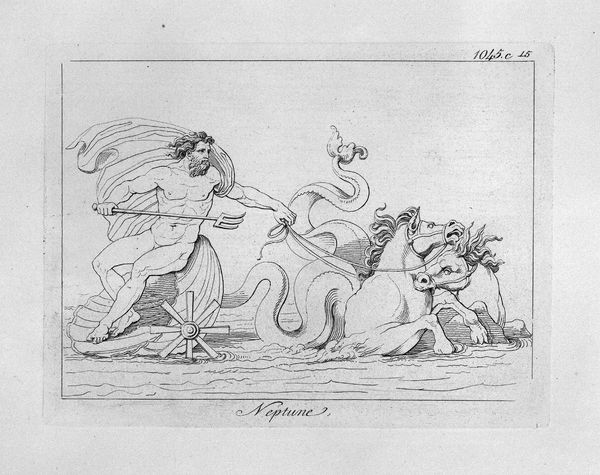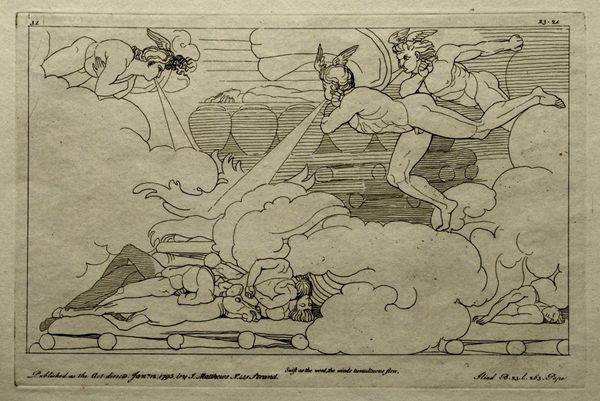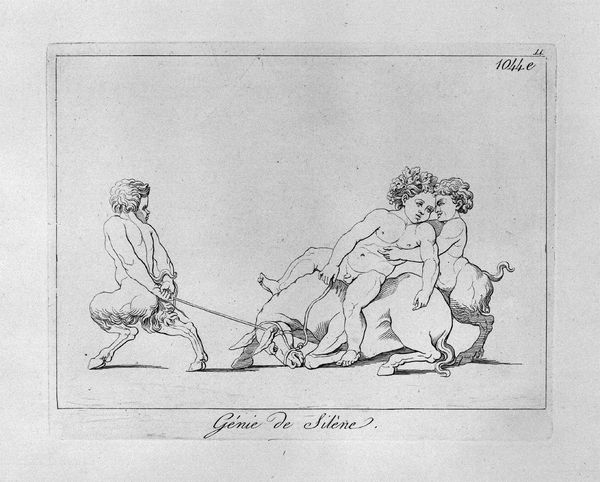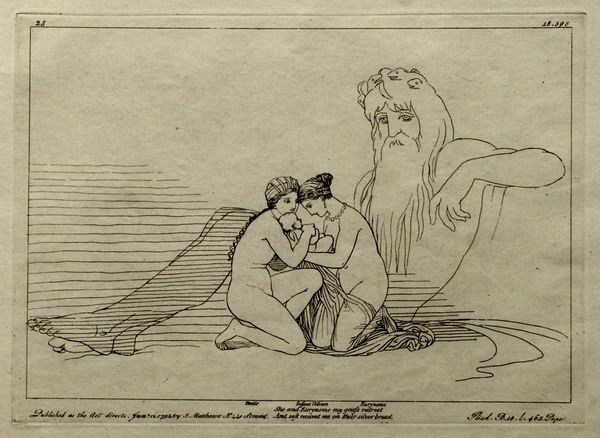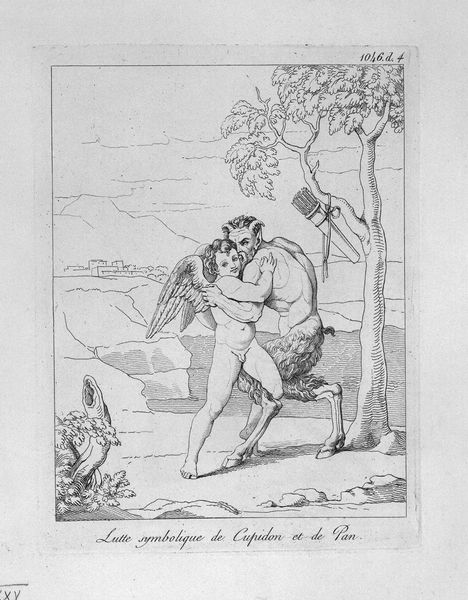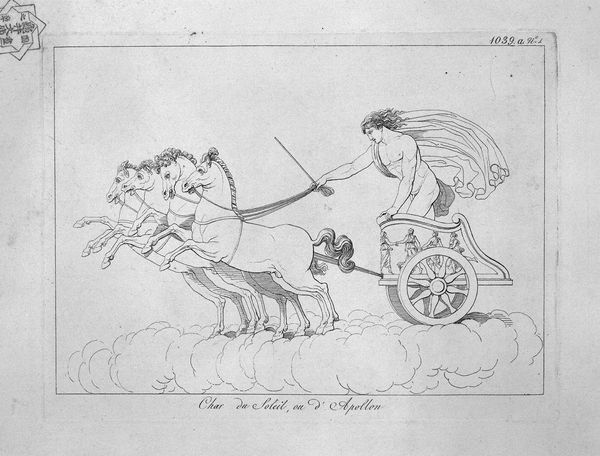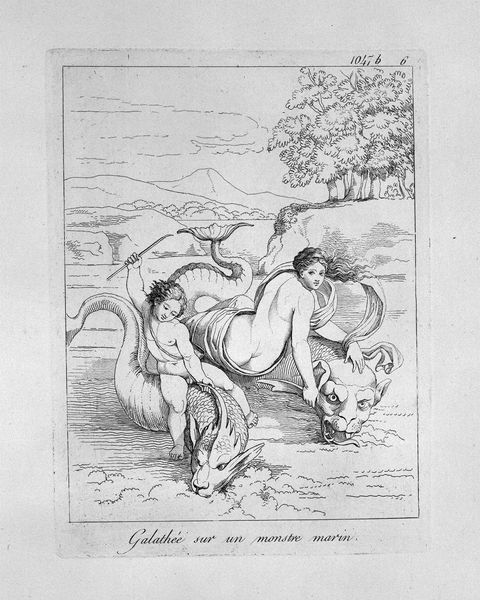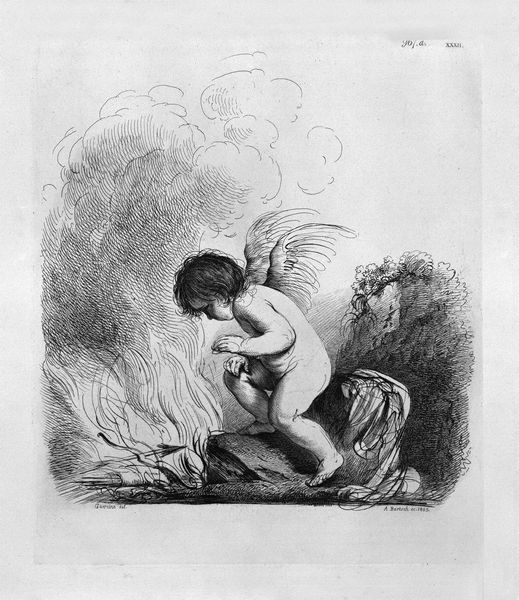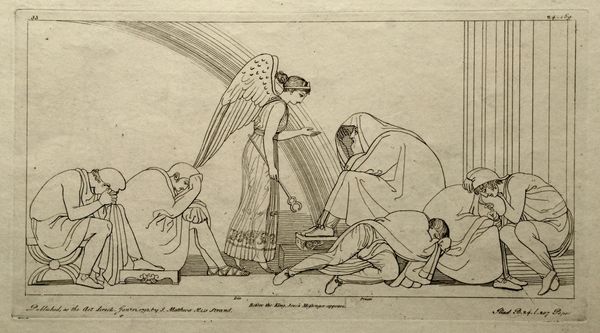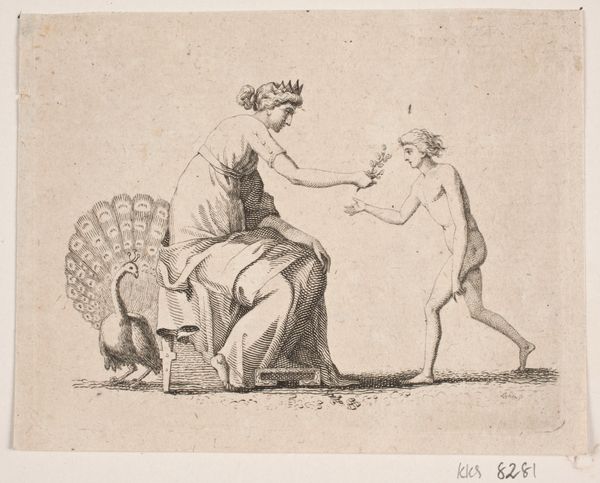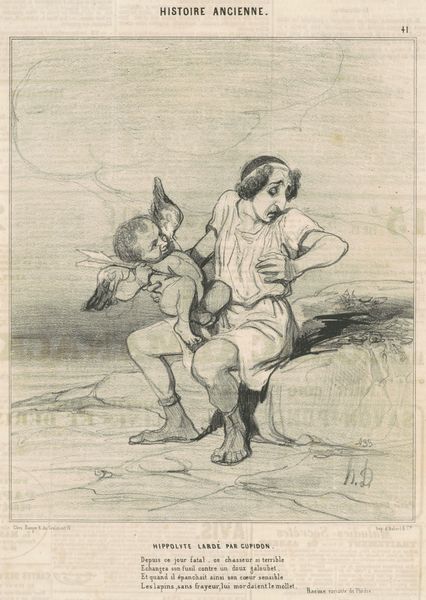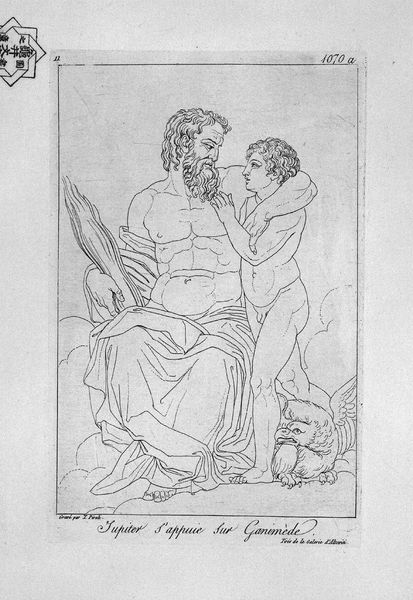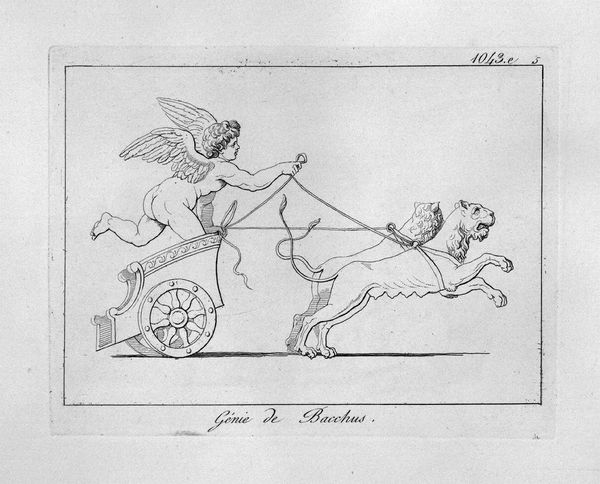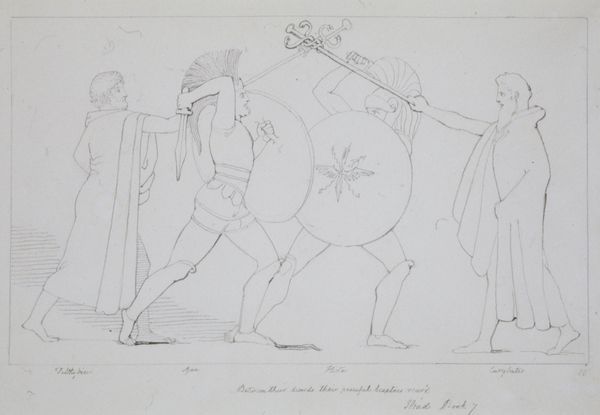
engraving
#
neoclacissism
#
greek-and-roman-art
#
figuration
#
roman-mythology
#
mythology
#
nude
#
engraving
Copyright: Public domain
Editor: This is Giovanni Battista Piranesi’s engraving, "Amphitrite." It looks like a fairly straightforward depiction of a classical myth, but something about the starkness of the engraving style feels different to me. How should we interpret this work in terms of the power dynamics represented here? Curator: A critical reading necessitates looking beyond the surface. While seemingly an ode to classical mythology, consider Piranesi’s Rome – a city grappling with its past and present. Amphitrite, the sea goddess, isn’t merely a figure of beauty; she embodies dominion over the sea. Yet, she’s also passively posed. Who truly holds power in this image, and what systems does it reinforce? Do the cherubic figures undermine her agency or merely embellish the scene? Editor: That's a really interesting perspective. I hadn’t considered the idea of her power being performative, somehow weakened by her posture and those around her. It's definitely less celebratory than I initially thought. Curator: Consider how Neoclassicism itself functioned. It evoked the past, ostensibly to create a more enlightened present. But did it challenge or simply re-inscribe existing hierarchies? Was it truly revolutionary, or did it merely cloak power in classical garb? And whose narratives are privileged through this classical lens, and at whose expense? Editor: I guess I was drawn in by the mythological elements and the sort of idealized form. But now I can’t unsee the potential contradictions that are also operating here. Curator: Exactly! This tension is central. Piranesi presents a vision of classical grandeur, yet we, as contemporary viewers, must engage critically with the underlying power structures embedded within it. This is why, it's important that we address issues of power, gender, and representation when interpreting works of art such as these. Editor: I will definitely have to remember to think about all those questions when faced with other, similar works of art in the future. Thanks for making this accessible. Curator: My pleasure!
Comments
No comments
Be the first to comment and join the conversation on the ultimate creative platform.
